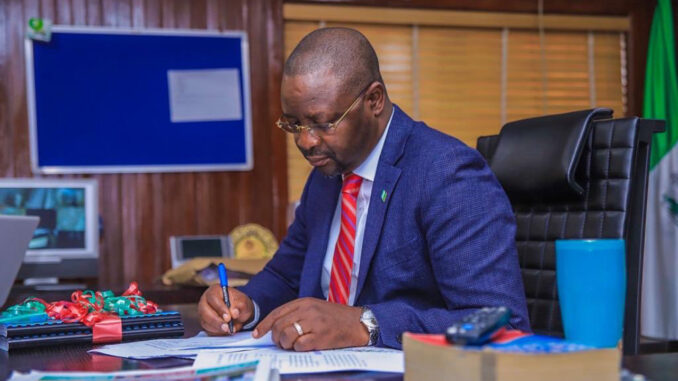
The best football stadium in Nigeria today is probably the new, state-of-the-art, magnificent edifice at the Uyo Township Stadium in Akwa Ibom State. It may also have the best football-playing surface of lush, flat and green grass.
I have actually watched a few matches of the Super Eagles in the stadium and think that the field of grass is quite good. At the same time, I also think it is still not good enough compared to playing surfaces in most clubs in Europe that we see week-in, week out on television, and some that some of us have had the good fortune of playing on even during our days in football, decades ago.
So, as I write on the subject of football grounds, let me state clearly, first, that I know what I am ‘talking’ about from personal experiences that cannot be bought in the market place. Such experiences are required for a better understanding and appreciation of the subject of a good football pitch.
Several years ago, at the invitation of the former President of the Nigeria School Sports Federation, NSSF, the late Dr. Adeleke Olaiya, I attended the yearly Umbro International Youth Football Tournament held in Manchester within the campus of the University of Manchester.
I counted 35 standard football fields on the grounds of the university. Each one of the grounds was well grassed, flat, lush and green. The worst of the fields was as good as what we currently have in Uyo.
There was a whole department for the maintenance of the fields, with well over a 100 maintenance crew of grounds men and other staff working from sunrise to sunset tending to the fields. What I saw and learnt on that trip reinforced my education on the issue of grass fields, their impact on football and footballers, their essentiality as a driver of the football business, their serious maintenance regimen, and so on.
On another occasion, during the Manchester Commonwealth Games, I also visited the grounds of Manchester City Football Club, when Kevin Keegan was manager of the team. I met with two British consultants working with the grounds maintenance department of the club. They took me to see their latest experiment in the club, a hybrid of grass and rubber being tested on one of the many fields. There was regular ongoing research into improving the quality of the training fields around the club grounds, whilst the main stadium pitch remained entirely grass. Various experiments were going on, but the bottom line was that the main component of every field was grass.
I eventually invited and brought both gentlemen to Nigeria when I was Chairman of the National Institute for Sports’ Governing Council. I took them to visit and conduct soil tests on the stadia in Enugu, Kaduna, Ibadan and Lagos. I still have the reports of their findings in my library. It was very interesting.Of greater interest was that they saw the magnitude of the business of fixing all the grounds and never showed any interest to return and help us fix them.
They could not understand the attitude of Nigerian football officials that we met all over the country to the dilapidated football grounds. They met many of the well-trained grounds men in some of the stadia and were shocked at the stories they were told about the total lack of appreciation of the importance of the fields and of their work in maintaining them.
END

Be the first to comment